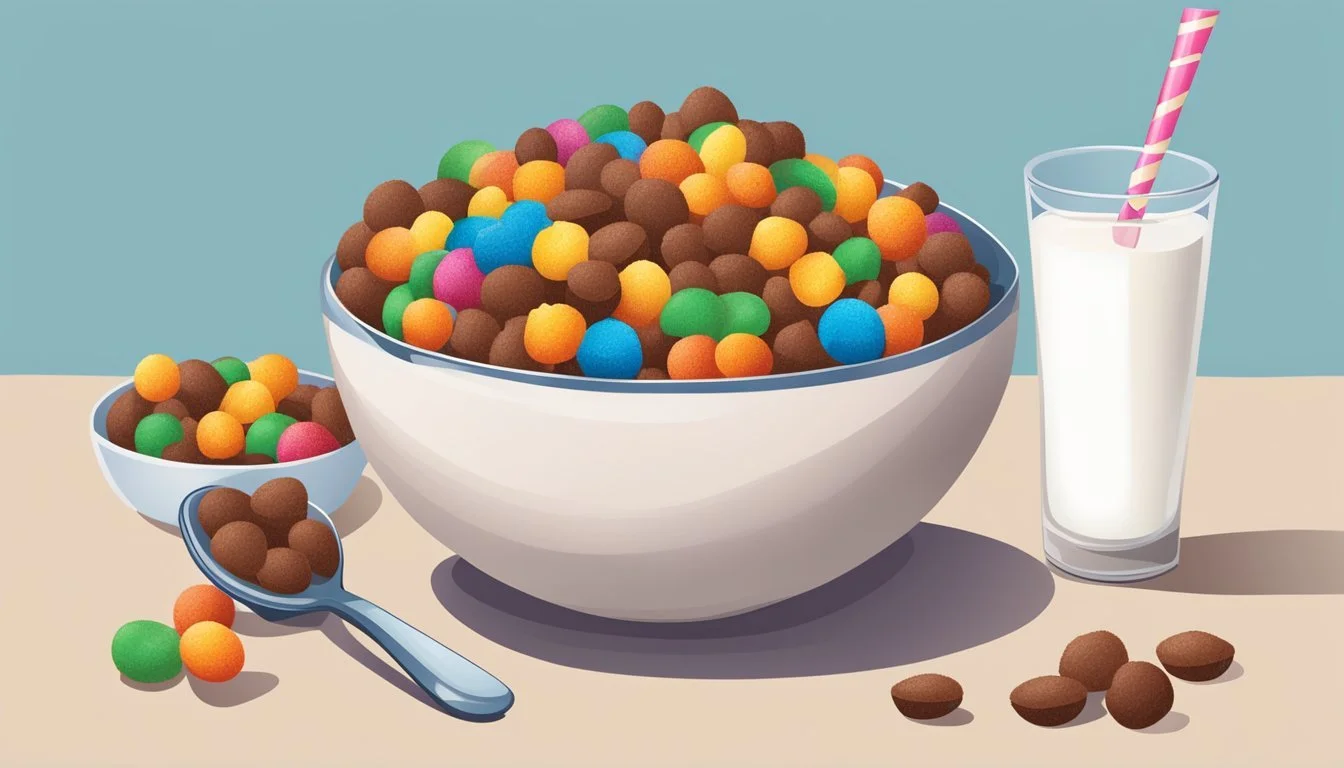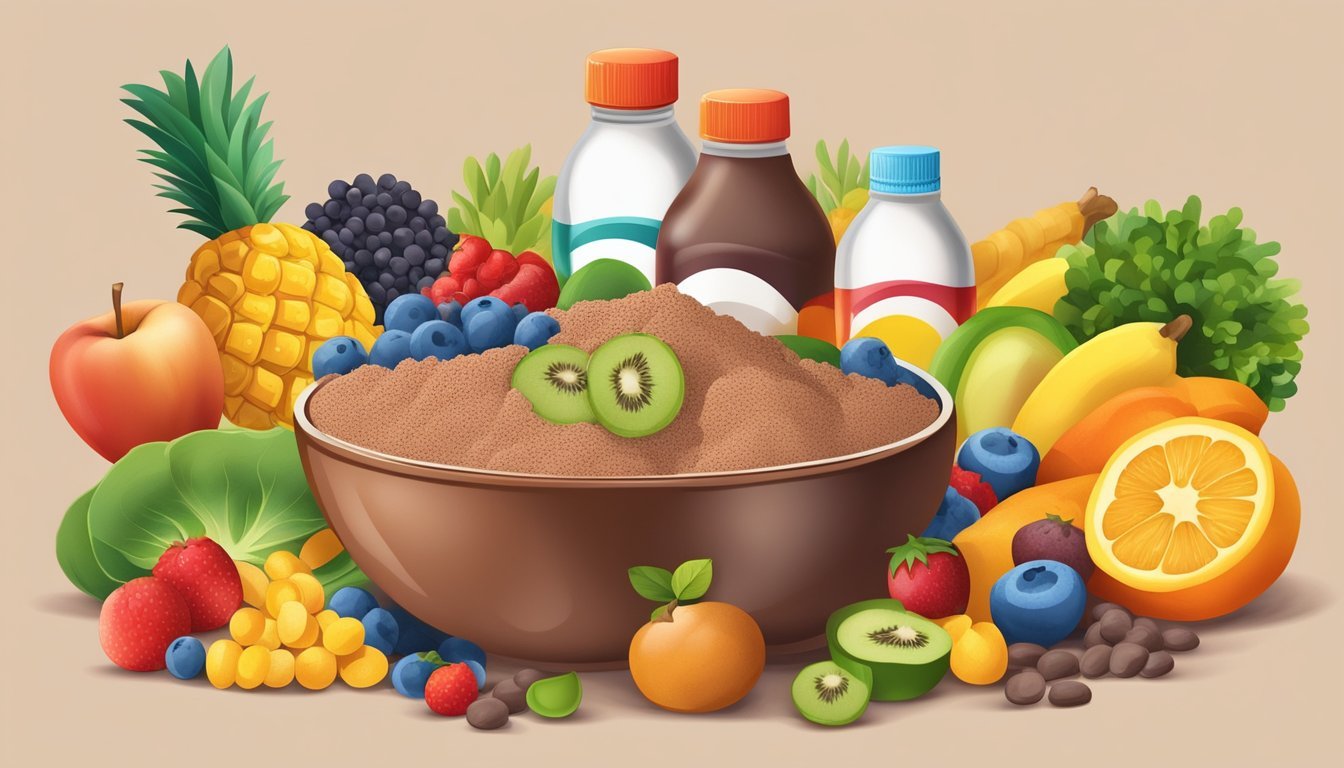Cocoa Puffs Nutrition Facts & More
What You Need to Know About This Breakfast Cereal
Cocoa Puffs, the beloved chocolate-flavored cereal from General Mills, has been a breakfast staple for generations. This crunchy, sweetened corn puff cereal boasts a rich cocoa taste that appeals to kids and adults alike. One cup (36g) of Cocoa Puffs contains 138-140 calories, with 83% of those calories coming from carbohydrates, 12% from fat, and 5% from protein.
The cereal's nutritional profile includes some essential vitamins and minerals. Cocoa Puffs are fortified with iron, providing 75% of the daily recommended value per serving. They also contain vitamin A and vitamin B6, offering 21% of the daily value for each. While these nutrients contribute to the cereal's overall nutritional value, it's important to consider the sugar content when evaluating Cocoa Puffs as part of a balanced diet.
Cocoa Puffs Compared to Other Breakfast Cereals
Nutrition Facts Overview
Cocoa Puffs cereal provides a mix of macronutrients and micronutrients. Its nutritional profile includes carbohydrates, protein, and various vitamins and minerals.
Macronutrient Breakdown
A 1-cup (36g) serving of Cocoa Puffs contains 140 calories. Carbohydrates make up the majority of the macronutrients at 31 grams per serving, accounting for 83% of the total calories. This includes added sugars, which contribute to the cereal's sweet taste.
Protein content is relatively low at 2 grams per serving, representing 5% of the calorie content. The fat content is 2 grams, providing 12% of the total calories.
Here's a breakdown of the macronutrients:
Total Carbohydrate: 31g
Protein: 2g
Total Fat: 2g
The cereal is low in dietary fiber, which is important for digestive health.
Vitamins and Minerals Content
Cocoa Puffs are fortified with various vitamins and minerals. The cereal provides significant amounts of iron, with one serving containing 626% of the daily value. This high iron content can contribute to maintaining healthy blood cells.
Other notable minerals include:
Calcium: 111% of daily value
Zinc: 379% of daily value
Phosphorus: 95% of daily value
The cereal also contains smaller amounts of magnesium, potassium, and selenium. These minerals play important roles in various bodily functions, including bone health and metabolism.
Vitamins are also present in Cocoa Puffs, though specific amounts are not provided in the search results. Fortified cereals typically include B vitamins and vitamin D.
Detailed Nutritional Components
Cocoa Puffs contain a mix of macronutrients, with carbohydrates making up the largest portion. The cereal also provides small amounts of fat and protein, along with various micronutrients.
Fat Profile
Cocoa Puffs contain a modest amount of fat, typically around 1.5 grams per 27-gram serving. This accounts for about 15 calories from fat in a 100-calorie serving. The fat content is relatively low compared to many other breakfast cereals.
Most of the fat in Cocoa Puffs is unsaturated. Saturated fat content is minimal, usually less than 0.5 grams per serving. The cereal contains no trans fats.
Polyunsaturated and monounsaturated fats make up the majority of the fat profile. These healthier fats contribute to the cereal's overall nutritional value.
Carbohydrate Insights
Carbohydrates are the primary macronutrient in Cocoa Puffs, comprising about 87% of its dry weight. A typical serving contains around 23 grams of total carbohydrates.
The carbohydrate content includes both simple and complex carbs. Added sugars contribute to the sweet taste, though some versions offer reduced sugar options.
Fiber content in Cocoa Puffs is relatively low, usually around 1 gram per serving. This leaves the net carb count close to the total carb count.
The cereal's high carbohydrate content provides quick energy, making it a popular breakfast choice. However, the relatively high sugar content and low fiber may lead to rapid blood sugar spikes.
Protein Content
Cocoa Puffs contain a small amount of protein, typically around 1.5 to 2 grams per serving. This represents about 5-6% of the cereal's dry weight.
The protein in Cocoa Puffs comes primarily from the corn and wheat ingredients. It provides a mix of essential amino acids, though not in the ideal proportions found in complete protein sources.
While the protein content is not high, it contributes to the overall nutritional profile of the cereal. For a more protein-rich breakfast, consumers often pair Cocoa Puffs with milk or yogurt.
The protein in Cocoa Puffs helps provide some satiety, though its relatively low content means the cereal is not considered a significant source of this macronutrient.
Vitamins and Minerals
Cocoa Puffs provide a variety of essential vitamins and minerals that contribute to overall nutrition. The cereal is fortified with key nutrients to support various bodily functions and promote health.
Essential Vitamins
Cocoa Puffs contain several important vitamins. Vitamin C supports immune function and acts as an antioxidant. Vitamin D aids calcium absorption for strong bones and teeth. B vitamins like B6, B12, and riboflavin help with energy metabolism and red blood cell formation.
The cereal also provides vitamin A, which is crucial for eye health and immune function. Niacin and thiamine contribute to nervous system health and energy production. Folate, another B vitamin found in Cocoa Puffs, is essential for DNA synthesis and cell division.
Mineral Benefits
Iron is a key mineral in Cocoa Puffs, supporting oxygen transport in the blood and preventing anemia. Calcium and phosphorus work together to build and maintain strong bones and teeth. Zinc plays a role in immune function and wound healing.
The cereal contains magnesium, which is involved in hundreds of biochemical reactions in the body. Copper aids in forming red blood cells and maintaining nerve cells and the immune system. Manganese contributes to bone formation and metabolism.
Selenium, an antioxidant mineral, helps protect cells from damage. Potassium supports heart function and helps regulate blood pressure.
Serving Size and Daily Values
Cocoa Puffs' nutrition label provides essential information about serving sizes and daily values. These metrics help consumers make informed decisions about their cereal intake and overall diet.
Understanding Serving Size
A serving of Cocoa Puffs is typically 3/4 cup or 27 grams. This amount contains approximately 100 calories. It's important to note that many people consume more than one serving in a sitting.
Larger family-size boxes may list a serving size of 1 cup (36 grams), which contains about 138 calories. Actual consumption often exceeds these recommended portions.
Recommended Daily Intake
The Percent Daily Value (%DV) on Cocoa Puffs' nutrition label is based on a 2,000 calorie diet. These percentages help consumers gauge how the cereal fits into their daily nutritional needs.
Key nutrients in Cocoa Puffs include:
Total Fat: 1.9g (2% DV)
Carbohydrates: 84g (28% DV)
Protein: 5.6g
The cereal is relatively low in fat but high in carbohydrates. Consumers should consider these values when planning their daily meals and snacks.
Health Considerations
Cocoa Puffs raise important dietary considerations due to their nutritional composition. Consumers should be aware of potential allergens and how this cereal fits into a balanced diet.
Dietary Restrictions and Allergies
Cocoa Puffs contain whole grain corn, which may be problematic for individuals with corn allergies or sensitivities. The cereal also includes wheat ingredients, making it unsuitable for those with celiac disease or gluten intolerance.
People with milk allergies should be cautious, as the cereal is often consumed with milk. Cocoa Puffs contain artificial flavors, which some individuals may choose to avoid due to sensitivities or personal preferences.
The presence of BHT as a preservative may be a concern for those seeking to minimize artificial additives in their diet.
Balanced Diet Integration
Cocoa Puffs are high in carbohydrates and sugar, with 31g of carbs per 42g serving. This composition can lead to rapid blood sugar spikes, especially when consumed alone.
To improve nutritional balance, consumers might pair Cocoa Puffs with protein-rich foods like Greek yogurt or nuts. Adding fresh fruit can increase fiber and vitamin content.
The cereal is fortified with vitamins and minerals, including calcium, zinc, iron, and vitamin C. However, it should not be relied upon as a primary source of these nutrients.
Portion control is crucial. The high sugar content (10g per serving) means Cocoa Puffs should be eaten in moderation as part of a varied diet.
Comparison with Similar Foods
Cocoa Puffs can be compared to other breakfast cereals and snack options in terms of nutritional content and health benefits. This comparison helps consumers make informed choices about their dietary intake.
Alternative Cereal Options
Cocoa Puffs are often compared to other chocolate-flavored cereals like Cocoa Krispies and Cocoa Pebbles. These cereals share similar flavor profiles but may differ in nutritional content.
Whole grain cereals offer healthier alternatives with higher fiber content. Options like Cheerios or Wheat Chex provide more balanced nutrition.
Granola and muesli present nutrient-dense choices, often containing nuts, seeds, and dried fruits. These alternatives typically offer more protein and healthy fats than Cocoa Puffs.
Oatmeal stands out as a customizable option. It can be prepared with various toppings to enhance nutritional value and flavor.
Nutrient Density Comparison
Cocoa Puffs contain added vitamins and minerals, including B vitamins and iron. However, they are relatively high in sugar and low in fiber compared to many other cereals.
Whole grain cereals generally offer more fiber, supporting digestive health and providing a feeling of fullness. They often contain less added sugar than Cocoa Puffs.
Protein content varies among cereals. Cocoa Puffs provide minimal protein, while options like Greek yogurt with granola offer significantly more.
Calcium levels in Cocoa Puffs are lower than in many fortified cereals. Alternatives like milk-soaked bran flakes provide higher calcium content.
Antioxidant levels differ between cereals. While Cocoa Puffs contain some cocoa, cereals with berries or nuts may offer a wider range of antioxidants.







